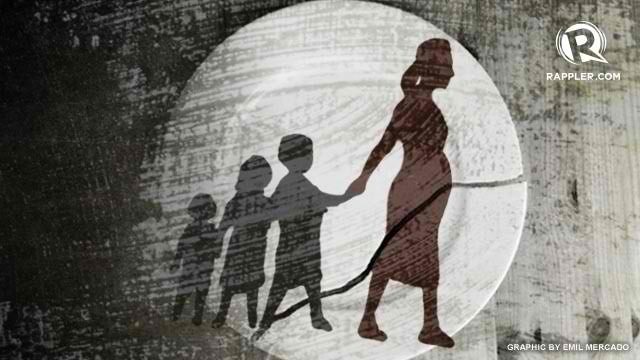SUMMARY
This is AI generated summarization, which may have errors. For context, always refer to the full article.

MANILA, Philippines – The passing of the reproductive health (RH) law in 2012 was a historic moment for the Philippines, but what has happened since then?
Not much, advocates say.
“After passage of the law, there has been a lot of silence,” Payal Shah, senior legal adviser of the New York-based Center for Reproductive Rights (CRR), told Rappler Talk on Friday, June 26.
“Is it being implemented? Are women accessing services?”
The CRR, alongside local non-governmental organizations, pushed for the United Nations Committee on the Elimination of Discrimination Against Women (CEDAW) to investigate how Manila’s local policies violate women’s rights.
In April 2015, the committee found the Philippine national government accountable for tolerating local executive orders – under former Manila mayors Lito Atienza and Alfredo Lim – that systematically and deliberately banned the supply and funding of modern contraceptives.
It reported that such policies not only deprive poor women of their reproductive rights, but also puts their lives at risk.
But how come the UN is getting involved with a local issue?
“It’s the first time a UN body released such a comprehensive report on contraceptive information and services,” said Shah, “The first one in Asia. This is a serious human rights violation globally and in the region.”
In fact, Manila’s human rights violations are considered at par with the cases of killings and abduction of women in Mexico.
National obligation
Without access to reproductive services, several women and girls continue to bear children they cannot support. “Some had to choose between purchasing food or contraceptives,” said Shah.
Some of these unplanned or unwanted pregnancies may have also resulted from violence like marital rape. “Some women are abused by husbands when they refuse sex because they don’t want to get pregnant,” Shah explained.
Although some health centers started providing more services since the RH law, Shah argued that barriers remain plenty. “There’s still many vulnerable women without access,” she stressed, “They’re unaware of the law.”
The challenge, according to Shah, is for the Philippine government to ensure that national policies like the RH law are implemented down to the local level. The devolution of healthcare services, Shah stressed, is not an excuse.
Because Manila’s policies are tolerated, Shah worries that other local governments might follow suit, hence further stigmatizing RH services.
Adding another layer to the problem is how religion tends to penetrate Philippine policymaking. “Human rights law is very clear: religious ideology cannot be used to justify human rights violations,” Shah argued. “Policies should be based on medicine and science, not religion.”
Meanwhile, other predominantly Catholic nations like Spain and Ireland have more liberal laws on RH and abortion.
Abortion

The CEDAW advised the government to decriminalizate abortion.
In the Philippines, abortion is banned without any clear exceptions, not even to save a woman’s life.
Since abortion is highly stigmatized in the country, women seeking post-abortion care are often discriminated or denied care. Some of them live, others die.
Shah recalled meeting a woman who was tied down to her hospital bed after seeking post-abortion medical care. “It was a way of punishing her,” she added.
“As a healthcare worker, it’s part of your ethical obligation to provide help,” said Shah. “Law is very clear: post-abortion care is legal.” She also suggested training healthcare workers in providing post-abortion care.
Although abortion is banned, the reality is that thousands of Filipino women resort to it every day. Since the country does not allow safe and medical abortions, women are left with no choice but to undergo unsafe ones.
Why did these women need abortion in the first place? It goes back to the lack of access to sexuality education, reproductive rights services, and commodities, said Shah.
UN review in 2016
In some way, there’s progress in the Philippines, said Shah. She praises the RH law, but reminds the government that the victory does not end there. Strong implementation is yet to be felt.
“Then you have things like Manila’s executive orders, practically banning contraceptives. It’s so extreme,” she said.
The Philippines’ maternal mortality rate has also been increasing over the years, while the rest of the world has been going on the opposite direction.
The UN CEDAW committee will be reviewing the Philippines’ compliance anew in 2016. “Philippine representatives will be asked on what they’ve been doing. Different governments will sit on the council and ask questions,” shared Shah.
In the same year, the Philippines will be electing a new president. How will the next leader handle the implementation of the RH law?
“I’m really hoping we’ll see a concrete implementation,” said Shah. She also hopes the next president would review and repeal discriminatory policies like Manila’s.
On Monday, June 29, CRR alongside other NGOs and civil society organizations will be meeting with the Department of Health, the Commission on Population, the Commission on Human Rights, and other concerned agencies to discuss the Philippines’ next step. – Rappler.com
Add a comment
How does this make you feel?
There are no comments yet. Add your comment to start the conversation.